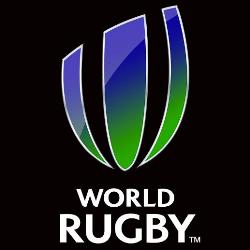 World Rugby comments on the latest developments in the George North head injury incident.
World Rugby comments on the latest developments in the George North head injury incident.
World Rugby notes the outcomes from the independent Concussion Management Review Group investigating the handling of George North’s head injury incident during the Leicester Tigers v Northampton Saints Aviva Premiership match on 3 December 2016.
World Rugby’s number one priority is player welfare and our primary concern is the welfare of George and all players. It is therefore disappointing that apparent non-compliance with the sport’s elite head injury protocols led to George remaining on the field of play when he should have been immediately and permanently removed.
World Rugby’s recognise and remove protocols state in no uncertain terms that any player displaying clear or suspected signs of loss of consciousness should be permanently and immediately removed from the field of play. In this case, the Head Injury Assessment should not have been undertaken.
Unions and tournament organisers can access the Head Injury Assessment process for elite competitions, subject to World Rugby’s player welfare tournament standards criteria being met. In this incident, it is clear that there was a failure to comply with these robust and well-established protocols, which continue to successfully protect players around the world. Specifically, failure in the identification and management of the injury and due consideration of risk when considering North’s history were at fault in this unfortunate case.
In addition, World Rugby would like to clarify the following regarding the head injury education, prevention and management framework that operates in the elite game:
- It is apparent that the well-established head injury protocols defined within the Tournament Player Welfare Standards were not fully adhered to at the match in question. These protocols are mandatory under condition of adoption of the HIA process in elite competitions.
- The player should have been immediately and permanently removed from the field of play with a suspected loss of consciousness.
- A cornerstone criteria of HIA adoption in elite events is an individual risk stratification on all players, which is aimed at identifying and protecting high-risk players based on medical history. It is clear that George is such a player.
- As a tool to test for suspected concussion, the HIA is successfully protecting players at the elite level and less than four per cent of players with a confirmed concussion at Rugby World Cup 2015 remained on the field following their injury. Prior to the HIA, 56 per cent of concussed players returned to play following their injury – a dramatic and positive reduction.
- While the player should have not have undertaken an HIA given apparent loss of consciousness, the HIA is based on the SCAT 3 assessment tool. Such side-line assessment has been endorsed as best practice by the recent Berlin Concussion Consensus Conference
- The untoward review incident review process (as stipulated within HIA adoption criteria) is designed to identify issues of non-compliance and reduce the risk of future repetition.
While recognising that there is always a risk of human error, we will seek further information from the RFU regarding the factors behind the apparent non-compliance with World Rugby protocols and the outcomes reached by the independent review group. World Rugby will also continue to work proactively with its unions to ensure best-practice is implemented and followed in order to reduce the risk of a repeat incident within elite competitions.
worldrugby